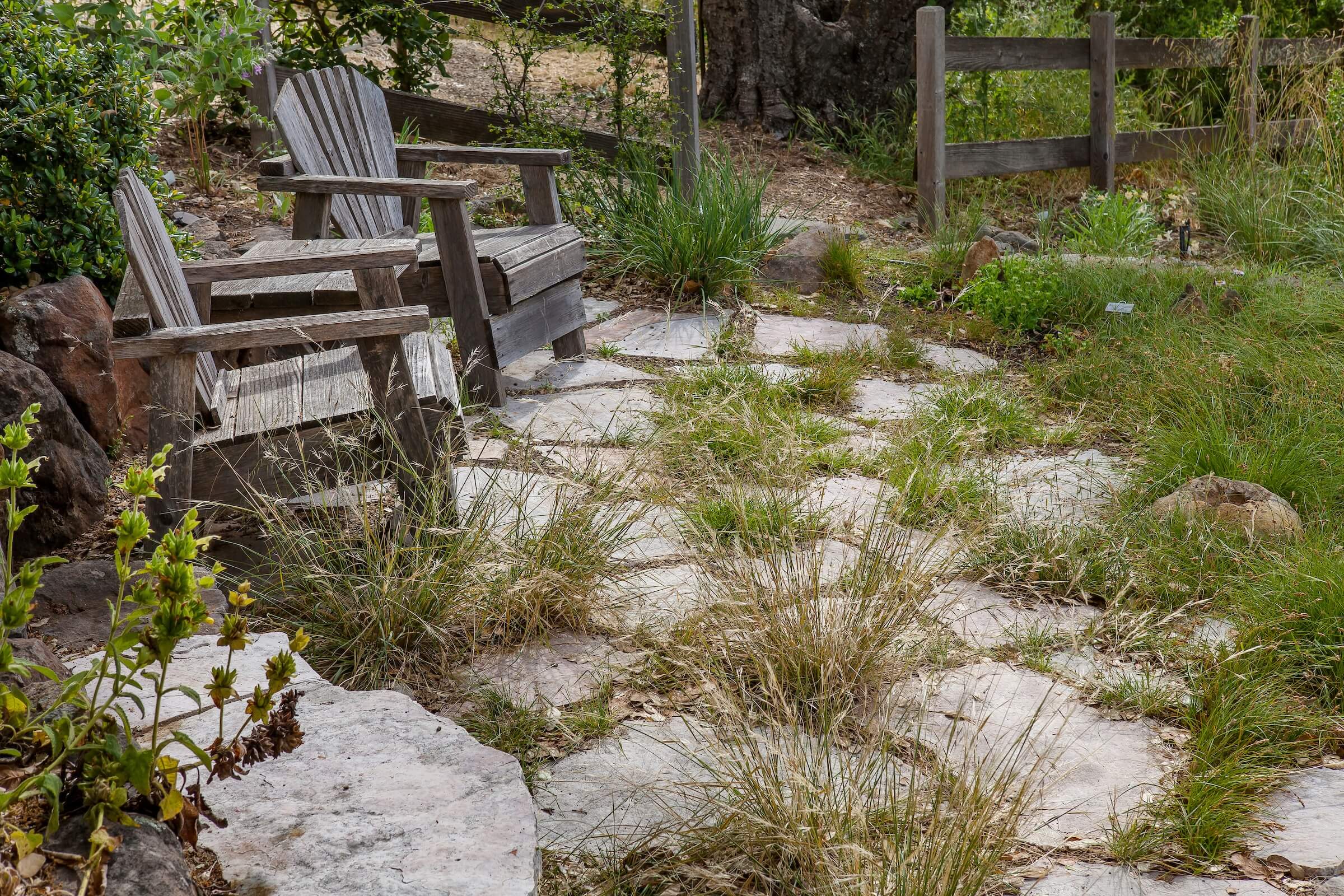The days are still warm and we’re all hoping, once again, that this will be an El Niño year with ample rainfall and a good snow pack in the Sierras. The days are noticeably shorter, and the evenings are much cooler. The shorter day length is a cue to many native plants and seeds that the season of growth in California is arriving; now we just need the rains!
Seeds also clearly represent the end of one cycle of life and the beginning of another. The only species that I’m still collecting seeds from is the lovely little yellow-flowered tarweed (Hemizonia congesta ssp. lutescens). I’ll be collecting almost daily from various plants in various areas right through most of October, or until the rainy season really starts. Once the weather is cool and consistently moist, it’s no longer a good idea to gather seed.
I’m into the third year of creating a meadow area within my garden; it gets sun all day long in one part and late afternoon sun in another. Purple needlegrass (Nasella or Stipa pulchra) is establishing in the sunny half, and California fescue (Festuca californica) is establishing in the shadier half. I’ve been weeding out non-native annual grasses throughout the years in this area and topdressing with a light application of all-green compost.
If the rains don’t arrive soon, I’ll put a sprinkler on for half an hour or so to make the soil a little more workable. Then, using a rake, I’ll loosen up the soil a bit, just down to about two inches, before I spread more seed. I like to use a mix of annual and perennial wildflowers species, and sometimes I customize my seed mix. I always mix the seeds with river sand (NOT playbox or beach sand, which contain salts) before spreading it. This allows me to see where I’ve sown the seed. Once that is done, I walk all over the space to make sure there’s good seed-to-soil contact.
Then the seeded area gets a covering of light mulch. I’ll use a wildflower “hay” in the sunny area, and make another “hay” of perennial bunchgrass stems for the shadier side, then water again. Since I have lots and lots of birds foraging in the garden, I will cover the whole area with very light “cloud” or row-cover fabric. It lets water and light through, and should be laid on fairly loosely to allow the growth of seedlings underneath. The edges can be tacked down with earth staples, or held down with rocks.
It’s important to let the seedlings develop for a while with protection because, come spring, the Sparrows really like to nibble on tender young greens; there needs to be enough plant to withstand this minor predation. Another way to protect the seeds and new seedlings is to lay some light branches over the whole area. Sparrows can’t really do their “double scratch” in the confined spaces between the twiggy stuff; just be sure to lift off the branches before the seedlings are so large that they get tangled in the protective cover.
As the meadow planting matures in areas, I switch to a more permanent gravel mulch, and will let nature take its course—I will simply be the editor in my garden. Wildflowers often seed into my gravel pathways. This seems to be an ideal situation for them but since I still need to be able to walk the pathways, I let them grow just at the edges, and carefully dig nice specimens from the middle of the path to move or pot up; the rest go to my compost piles. A hori-hori knife is the perfect tool for this; it reaches far down enough, and then with just a little wiggling, loosens up the soil so that the seedlings can be lifted out with the root ball intact.

